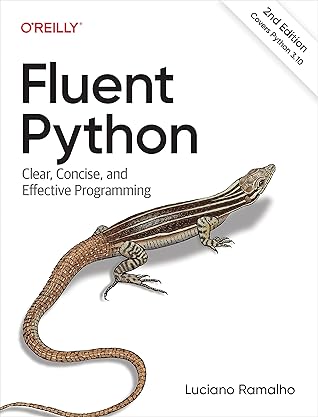The key idea is to reduce a series of values to a single value. The first argument to reduce() is a two-argument function, and the second argument is an iterable. Let’s say we have a two-argument function fn and a list lst. When you call reduce(fn, lst), fn will be applied to the first pair of elements—fn(lst[0], lst[1])—producing a first result, r1. Then fn is applied to r1 and the next element—fn(r1, lst[2])—producing a second result, r2. Now fn(r2, lst[3]) is called to produce r3 … and so on until the last element, when a single result, rN, is returned.
Welcome back. Just a moment while we sign you in to your Goodreads account.


